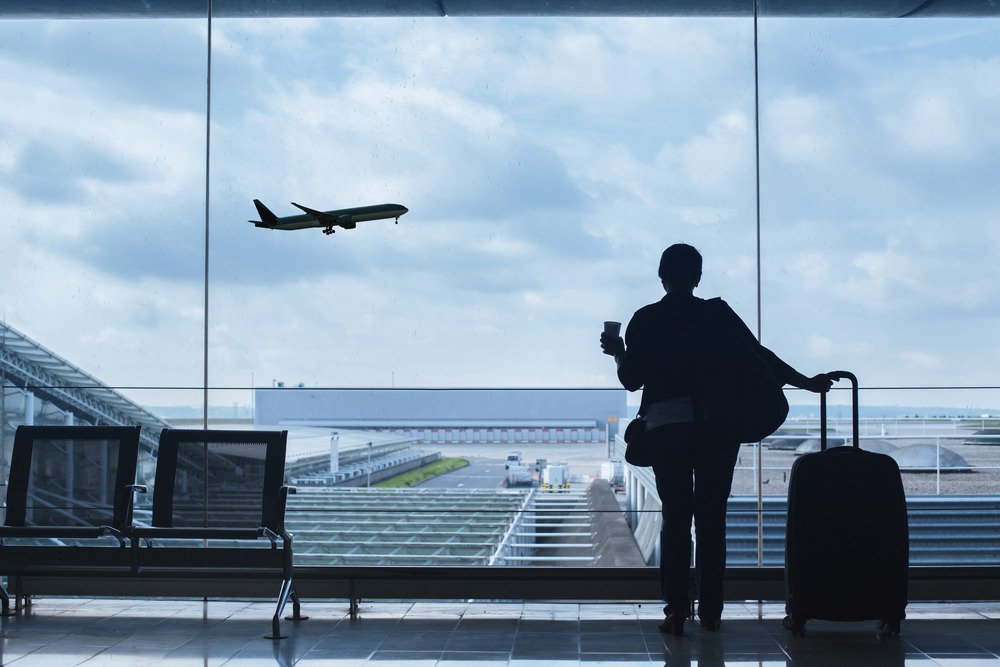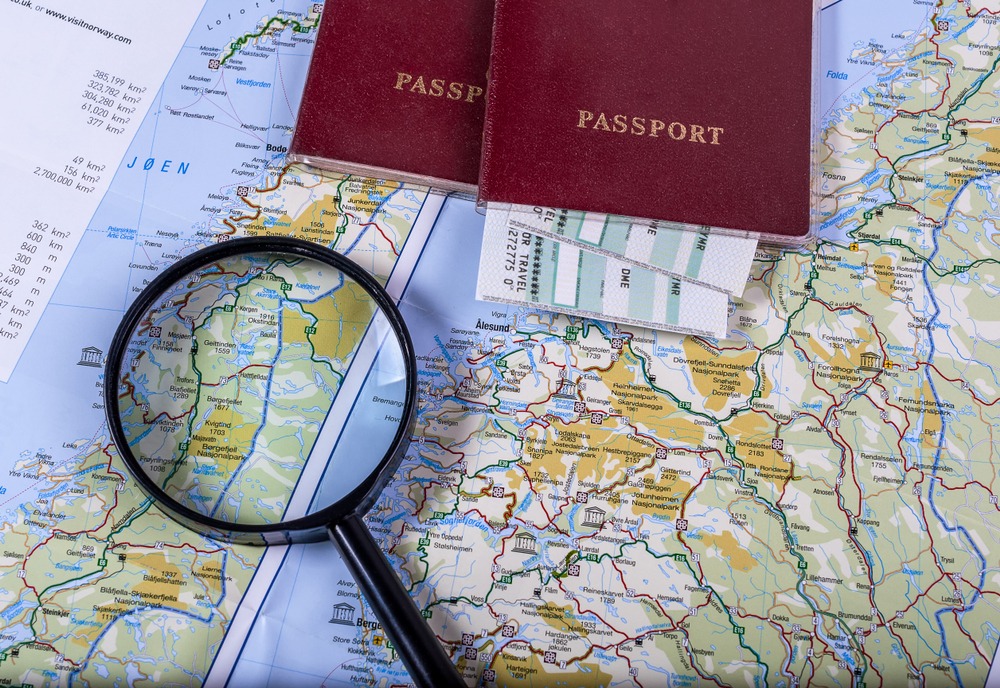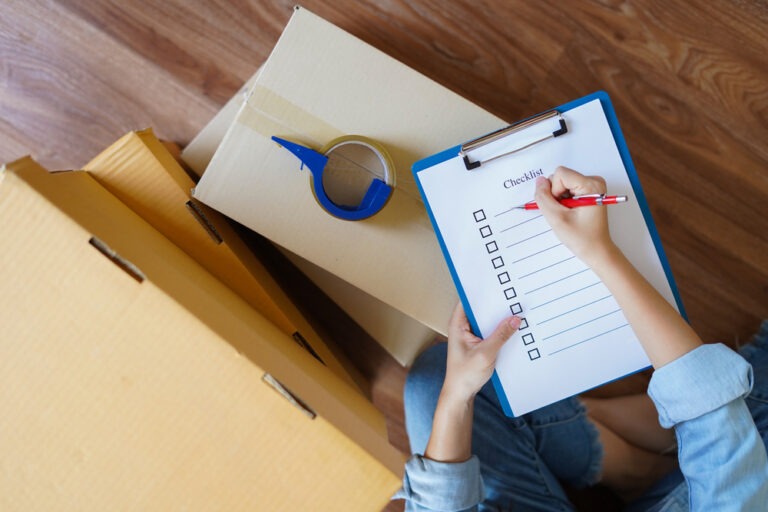Your In-Depth Checklist for Moving Abroad
Moving abroad isn’t just a matter of getting on a plane and landing at your new location. At least not if you want to do it properly.
Instead, you’ll start a complex process that will require quite a bit of preparation. If you’re planning an international move, it would be best to make a “moving to a new country” checklist. Luckily, you’re at the right place for that.
This article will give you an in-depth international moving guide that you can use to create a comprehensive checklist. If you follow all steps provided here, you’ll be completely ready for the move.
To make this list even easier to follow, we’ll break down the subject into individual chapters.

Your Passport and Visa
Unsurprisingly, the first thing you should check is your passport. Make sure to cover the following:
- Your passport should be valid, meaning it hasn’t expired or become damaged.
- For most countries, your passport will need to remain valid for several months. If it expires a few weeks after your move, it would be best to apply for renewal.
- If you’ve traveled a lot, ensure there are at least a couple of blank pages in your passport. In most countries, this will be necessary for stamping and visas.
Next up on your preparing to move abroad checklist will be the visa. If the country you’re moving to requires a visa for US citizens, you’ll need to know which type you’ll need. Here’s what’s available:
- Temporary visa: This is the type most suitable for students and tourists.
- Long-term visa: If you’re looking for employment overseas or are planning to stay for longer, this will be the visa for you.
- Working visa: Not all countries offer working visas. They’re intended for foreigners who wish to work in a country but don’t have a sponsorship from a local business.
Medical Considerations
Your checklist for moving abroad should have a dedicated medical section. The precise requirements will depend on the country you’re moving to, so that will be your first concern:
- Some countries will mandate medical checks, while others may ask for a health certificate. You should research what your destination country will ask for and make sure to set aside enough time to get the checks in order.
- You might need specific shots to visit a country or even go to a certain part of it. Your visit to the doctor for medical checks will be the perfect opportunity to get the necessary vaccination.
- It would be best to have your medical record ready. This can include dental records, prescriptions, scans, etc.
- If you’re taking prescription medications, ensure they aren’t illegal where you’re going. Some medicines can be perfectly okay in one country but cause issues in another. For instance, drugs like Adderall or Diazepam are restricted or banned in countries like Japan, Greece, or Indonesia.
- Get informed and lay the groundwork for health insurance in the new country. This will be easier if you’re moving for a job as your employer will take care of the insurance. But if you plan on freelancing or retiring, you’ll need to organize this matter yourself.
Get Your Documentation in Order
When moving internationally, checklist items that fall under documentation will, of course, be a must. If there’s one thing that can’t be avoided, it’s the paperwork, and you’ll need quite a lot of it. Here are the essential documents to put on your checklist for moving overseas:
- Passport
- Driver’s license
- Social security card
- Birth certificate
- Certificate of Citizenship
- Marriage certificate, if applicable
- Police clearance
- School or university diploma and transcripts
- Professional certificate or license
- Medical documentation
In addition to these essentials, you might need to gather some more paperwork for your expat checklist. For example, if you’re moving with kids, you’ll need to provide their birth certificates, child custody papers, or adoption documentation.
Similarly, if your kids or other family members will attend school in the new country, you’ll need their grade records, diplomas, and school transcripts.
Finally, you’ll likely need your divorce documentation if you’re divorced.

Building Your Language Skills
This category isn’t as essential as medical concerns or paperwork. However, understanding the language used in your destination country might make it easier to adapt to the new environment.
Note that, when moving out of USA, checklist items like this might not be necessary. The reason is pretty simple – plenty of other countries use English as their primary language. Furthermore, many countries use English extensively even though it’s not the official language.
Most of these countries are in North America, the Caribbean, and Africa. Plus, widespread use of English is common in many Middle Eastern countries, as well as major Asian countries like India and Pakistan.
If you aren’t moving to a predominantly English-speaking area, you’ll need to learn at least the basics of the language used in the new country. Yet, this doesn’t mean you’ll have to be fluent.
It would be best to pick up some essential words and phrases first. In this sense, your “moving to another country” checklist should include learning as much of the following as possible:
- Hello
- Goodbye
- Thank you
- Questions like “Where,” “When,” and “How much”
- Numbers
- Direction words and phrases, including “street,” “neighborhood,” “city,” compass directions (east, west, north, south), “left,” “right,” “up,” and “down.”
- Foods and beverages
You should give yourself enough time to get familiar and really adopt these expressions. Ideally, you could start learning the language a couple of months before moving.
Packing
Naturally, planning an international move can’t go without considering what you’ll take with you. Your packing list will look widely different depending on your circumstances. Here’s what you need to take into account when making packing decisions.
- Are you moving permanently or for a few years? If you’re moving abroad for a year, checklist items will usually boil down to the essentials. The list will be much more extensive in case of a long-term move.
- Where will you live? If you’re moving into a smaller home or one that’s missing some of the amenities you’ve had so far, you’ll need to take less stuff with you. This will also mean you’ll have to be more economical with the space you have.
- Does the new country have a different climate? The climate difference will play a significant role in your choice of clothes, but that won’t be the only aspect. If you’re bringing delicate items such as antiques, artwork, or musical instruments, an overly humid or arid climate might be harmful to them.
- What can you find easily in your new location? Consider whether you really need to carry certain items with you, especially if they’ll be readily available where you’re going. Of course, the opposite is also true – make sure to bring the things you’re certain you won’t find easily in the new country.
- Which small items are essential to you? Your checklist for moving overseas shouldn’t consist only of items with practical value. After all, you might be going to a completely different environment. That’s why it would be best to bring along certain things that will make you feel more at home. While this may sound less important, having familiar and personally valuable objects around will help you adjust to the new country faster.
Besides these considerations, two crucial factors will influence your choices: the cost of shipping and country-specific regulations.
Firstly, international shipping may come at different prices, but it probably won’t be cheap. You might find that many items are less expensive to buy at your destination than shipping. Of course, the value of the items themselves will play a role here.
It would be best to wage the value of each item you mean to bring along in terms of monetary, practical, and sentimental value. In essence, you should ask yourself whether paying the shipping cost is worth it.
Another consideration is if your items can actually survive the trip. Certain objects might be too risky to move as they could reach their destination damaged or entirely broken.
Finally, once your overseas move checklist is practically done, you should look at particular regulations of your new country. It might turn out that you can’t bring certain items anyway. Common examples include various live beings – plants or animals – and chemical substances.
Navigating all these considerations may quickly turn your packing organization into chaos. That’s why it would be a good idea to find a moving abroad checklist template and put each item on paper.
What to Do With the Things Left Behind?
Some of your belongings that don’t make it on your checklist for moving abroad will undoubtedly go to family members or friends. However, there will likely be some items that won’t find a new home as easily.
The best solution, in that case, would be to sell them. While certain objects will sell quicker than others, you should start putting them on the market as soon as possible. Selling household items can take quite some time, and you’ll want to get it done before you leave. In fact, the money from the sales might prove helpful in augmenting your moving budget.
Ideally, it would be best if you prioritize selling home appliances and electronics, as those are easier to sell than, for instance, clothes or books.
Shipping
Your checklist for moving abroad wouldn’t be complete without shipping considerations.
Wherever you’re moving, you’ll probably be going by plane. In that case, your luggage will usually be limited to two bags free of charge, with extra fees for additional bags. This means that an international shipping service will be necessary.
Once you decide on moving from the United States, checklist items you’ll entrust to the shipping service will be quite obvious. First among them will be those objects you couldn’t possibly bring along personally. Of course, this will include any furniture pieces.
Your main concern will be to find a reliable shipping company. Here’s what you should look for when choosing your mover:
- Plenty of experience in international shipping
- Proper insurance coverage
- Favorable reviews and customer testimonials
- Reasonable pricing
All of the points stated above should be pretty straightforward. You’ll need an experienced mover because they’ll know all the details of international shipping in and out. Insurance ensures any potential damages to your things are covered, and the reviews prove the service is reliable.
Finally, pricing might be the most significant deciding factor. There are many shipping companies, and several will undoubtedly meet the rest of the criteria. So, you’ll need to make phone calls and get quotes to compare your options.
As always, you don’t want to go for the cheapest offer in the market. Cheap services usually provide precisely the quality equal to the price, that is, low. But that doesn’t mean you should overpay for shipping, either. That’s why we talk about a reasonable price – an amount that fits the service provided as closely as possible.

Tick All Boxes and Move With Confidence
As you’ve seen, there’s plenty to consider when moving to a different country. Most of what we discussed in this article might sound like common sense, but you’d be surprised how many things people remember in the last second.
That’s precisely why this international moving guide exists. If you use it as a definitive moving checklist, the crucial things won’t be left behind. Simply go through each item and tick the boxes as you take care of them. Crucially, leave yourself enough time to do everything at your leisure. Haste will only lead you to forget about something.
Follow the advice stated here, and your move to another country should go much smoother. And if you want even better help in that task, don’t hesitate to contact Arlington Movers Virginia.




